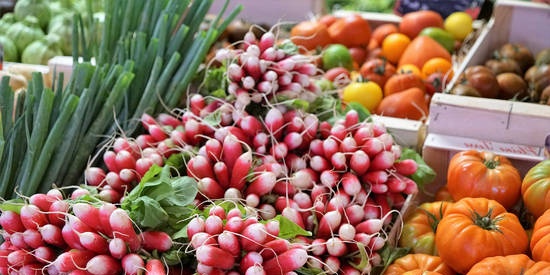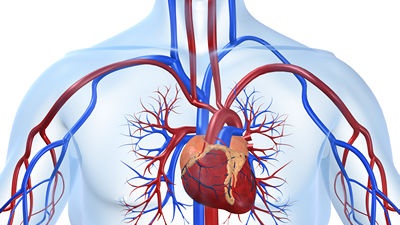How to eat for the elderly |
|
Previously, the adult population was divided into the following age groups: adult age (Status adultus) - from 25 to 40 years for women and from 26 to 45 years for men; mature age (Status maturitas) - from 40 to 55 years for women and from 45 to 55 years for men; senile age (Status senectus) - over 55 years. Time has amended this division. Indeed, can a person who has reached 55-60 years of age be considered old now? Indeed, in most cases, people of this age have excellent working capacity, are in creative bloom. Now more than 1/5 of the total population are persons over the age of 50. A slightly different age classification, approved by the gerontological and geriatric congress, turned out to be the most acceptable. Now people over 50 years old are divided into three age categories: mature age — 50-60 years old; elderly age - 61-74 years; senile age - 75 years and older. Due to the fact that the population of our country has matured, the development of nutritional principles for the elderly has acquired particular importance. After all, if people throughout their lives adhered to the correct diet, would engage in physical labor, then there would be fewer prematurely wilted, heavy, early aged people, According to modern scientific data, the diet of the elderly should be moderate but complete. A wide range of foods should be included in the diet. The calorie content of the diet for men is 2,200-2,650 kilocalories, and for women - 2,000-2,300 kilocalories. The daily intake of protein for men is 75-91 g, fat — 71-85 g. For women: protein — 65-79 g and fat — 61-74 g. The fatty part of the diet is divided as follows: one quarter - due to butter, the other - due to vegetable oil, the remaining two quarters - due to the fat contained in the food themselves, and fats used for culinary purposes.
What foods are high in calories? First of all, all animal and vegetable fats, fatty pork, smoked meats, fatty poultry (geese, ducks), high-fat cheeses, sugar and all confectionery. One of the first places in terms of their calorie content is occupied by bakery products. So, for example, if 100 g of rye bread is 217 calories, then one city loaf is 600 calories. These rather convincing numbers indicate that people who are inclined to be overweight should eat less bread. Every 200 g of baked goods is 100 g of carbohydrates, or 420 kilocalories, and an extra 100 g of carbohydrates leads to the deposition of 30 g of fat in the body. Low-calorie foods include all vegetables, fruits, berries. Such fish species as bream, pike perch, cod. From lactic acid products - low-fat cottage cheese, kefir. When composing a diet, it must be borne in mind that an excessive reduction in calorie content can lead to the fact that proteins, fats and carbohydrates only make up for the insufficient calorie content and will not be used by the body at all. In the diet of an elderly person, it is recommended to first of all reduce the amount of sugar, sweets, baked goods, as well as fat and foods containing a large amount of fat. It is known that sugar is a healthy, highly nutritious product. In the body, it is used to form glycogen, a substance that nourishes the liver, heart and muscles. Sugar is an indispensable component of blood, where its amount in a healthy person is maintained at a constant level. You cannot deprive the body of sugar, but you should limit its amount. Research in recent years has found that sugar consumed in large quantities dramatically increases the formation of body fat. The fact is that against the background of sugar, the formation of fat from other nutrients also increases. For older people who are not engaged in physical activity, 40-50 grams of sugar per day is quite enough. Naturally, it is also necessary to limit confectionery: honey, jam and others. Recently, there has been a tendency to significantly limit the consumption of fats, especially animals, due to the danger of introducing cholesterol into the body. Scientists studying the problem of nutrition have found that this point of view is devoid of foundation. Indeed, 100 g of lamb fat contains only 29 mg of cholesterol, in beef fat - 75 mg, in pork fat - 74.5-126 mg, in butter - 237 mg. Considering that the body normally produces 2,000 mg. and more cholesterol, then its intake into the body with food fat of about 100 mg per day does not matter. It is known that the main supply of the body with cholesterol occurs due to It should be noted that fats, which many are so persistently trying to give up because of the fear of getting atherosclerosis, turned out to be the necessary suppliers of some anti-sclerotic substances: vitamin F, phosphatides, vitamin E, vitamins A and D. The normal state of the cardiovascular system is one of the first conditions for the elimination of old age and prolongation of life. Vitamins P and C strengthen blood vessels, increase their elasticity and strength. Sources of vitamin C are potatoes, all vegetables, fruits, berries. True, not all of the listed products contain this vitamin in the same amount. Most of vitamin C is in rose hips and black currants and least of all in potatoes, onions, carrots, cucumbers, beets, pumpkins, watermelons, apples (except for Antonovka and Titovka). The content of vitamin C in certain vegetables and fruits depends on the season. So, if in young potatoes 25 mg% of vitamin C, then in winter its content decreases to 10 mg%. Vitamin P contributes to the accumulation of ascorbic acid in the body. The daily requirement of an adult for this vitamin is 50 mg. A few words in defense of the potato. There is evidence that the starch in potatoes does not contribute to the formation of body fat. Fiber of potatoes is easily absorbed and, like fiber of vegetables and fruits, helps to normalize beneficial intestinal microflora. Potatoes are the main source of potassium, a mineral that is essential for elderly people. 300 g of potatoes per day is enough to provide the body with potassium. K. S. Petrovsky |
| 6 most dangerous street food in India to avoid | The healing properties of beets |
|---|
New recipes

 Relatively recently it was believed that the higher the calorie content of the diet, the better a person eats. Now this point of view has changed. It has been established that high-calorie nutrition is usually excessive for the elderly: it leads to obesity, promotes the accelerated development of atherosclerosis, and leads to cardiovascular disorders.
Relatively recently it was believed that the higher the calorie content of the diet, the better a person eats. Now this point of view has changed. It has been established that high-calorie nutrition is usually excessive for the elderly: it leads to obesity, promotes the accelerated development of atherosclerosis, and leads to cardiovascular disorders.








